Enjoying a Masai Mara safari without a vehicle
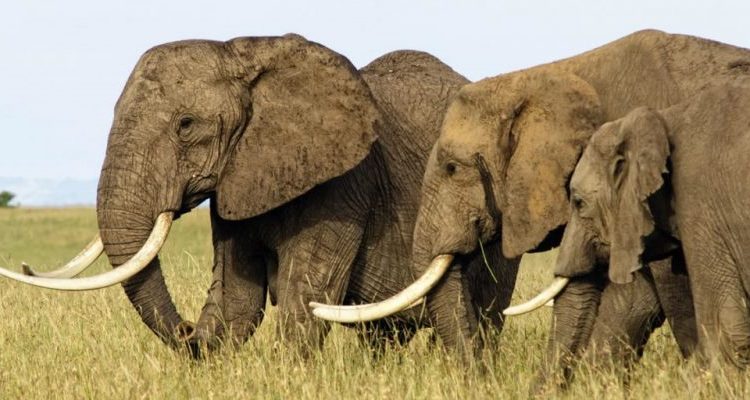
Kenya’s incredible Masai Mara is world renowned for its dense wildlife population and for the beauty of its iconic ‘Out of Africa’ landscapes. With wide open rolling plains dotted with acacias and desert date (or balanites) trees, patches of dense riverine forest along the Mara and Talek rivers, stands of olive trees on hillsides and thickets of croton bushes on rockier country, it’s a restful and restorative landscape, good for the soul as well as for wildlife. Because the land is so fertile and there is a good supply of water year round, the Mara supports a huge number of herbivores and they in turn feed a lot of lions, leopards, cheetah and hyena.
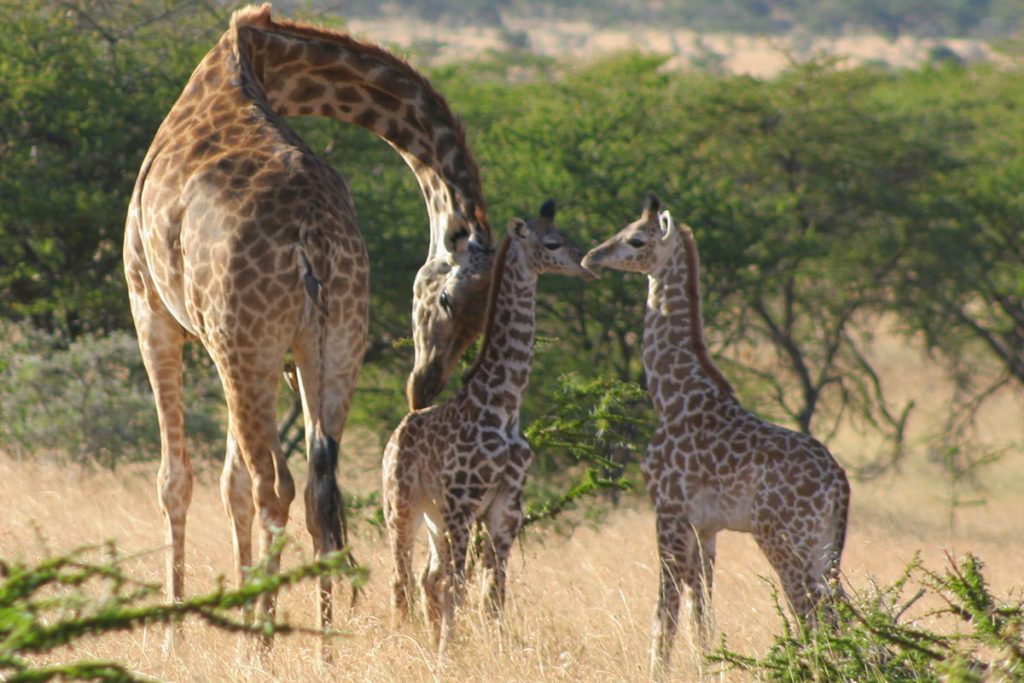
Giraffe close to Naboisho Camp
With so many predators, plenty of elephant, and big herds of buffalo the Mara has traditionally been a place where the wildlife was best seen from the safety and comfort of a vehicle. While this is still true in the Masai Mara National Reserve, in the Private Conservancies surrounding it, visitors nowadays can enjoy a safari amongst the wildlife without the noise and physical barrier of a vehicle.
Guide training, skills and experience have improved enormously over recent decades and this, along with a better understanding of wildlife behaviour and movement patterns allows guides and managers to safely allow guests to get out the vehicles, and properly connect with the bush and the wilderness. Walking safaris, sleep outs, bush breakfasts, picnic lunches and dinners under the stars are now regular offerings at a number of camps. In addition to this, horse riding is a simply superb way to experience the Mara, with the exhilaration of the speed of a horse and the thrill of getting so close to wildlife that perceives no threat from you while you are aboard a quadruped.
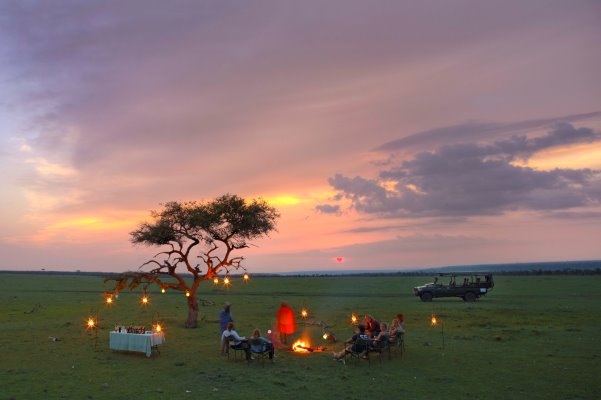
Sundowners out on the plains. Naboisho Camp
Walking
A number of our favourite Masai Mara camps include walking safaris as part of their regular offerings. You never walk fast in the bush, so walking safaris are not arduous, more an opportunity to microscopically examine your surroundings and immerse yourself in Africa. You will see wildlife, although the animals will tend to move away when they see the humans approaching on foot. Here are some examples of what is possible:
Serian and Ngare Serian have shared access to a private concession which only permits walking, allowing guests to spend hours without seeing anyone else or any vehicles. Tucked under the Siria escarpment alongside the western bank of the Mara river, this is a very beautiful part of the Mara.
Naboisho Camp is managed by an expert walking guide, Roelof Shutte, who loves taking guests out on foot into the superb Naboisho conservancy. Naboisho has a large population of elephant, buffalo, giraffe, lion and hyena, making this a very exciting place to walk.
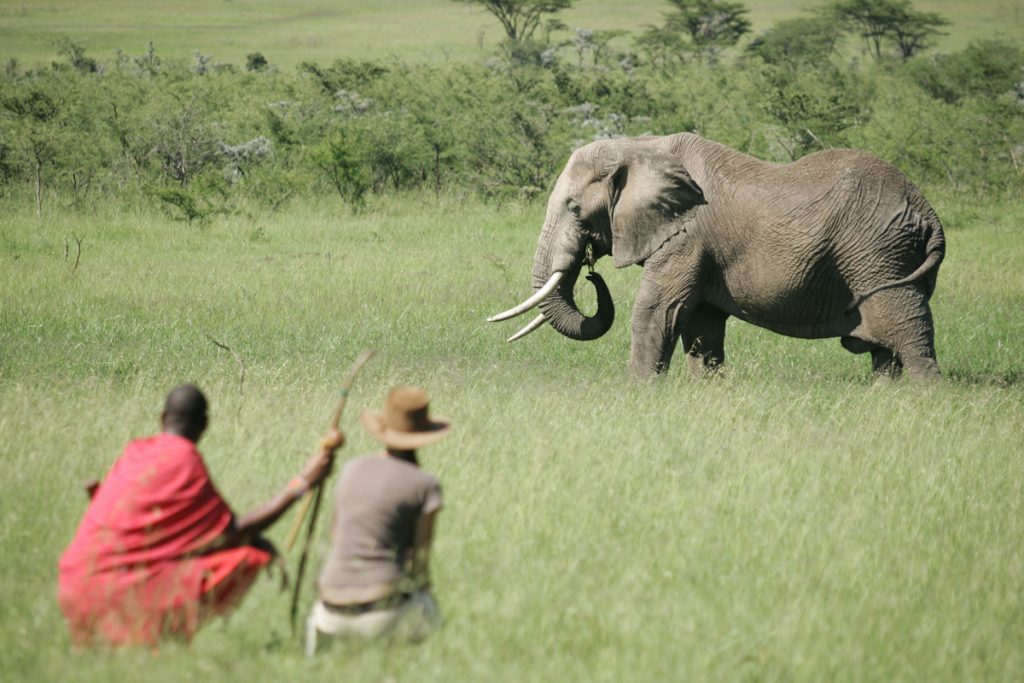
Enjoying a walking safari from Naboisho Camp
Kicheche offers part-day walking safaris from all of its Mara camps, each of which is in a superb wildlife location. They can also arrange an overnight walking safari with a night fly camping on the way.
Masai Trails offers multi-day walking safaris in the magical and remote Loita Hills and the Forest of the Lost Child, between the eastern edge of the Masai Mara and the Shompole and Lake Magadi region of the Great Rift Valley, allowing guests to spend up to a week walking with Masai guides and a team of donkeys to carry the luggage and the camp. It’s a fabulous opportunity for spending time with Masai people who live here, and to learn more about their way of life and culture.
Sleepouts
Serian has a gorgeous, romantic treehouse on its private concession. Walk from camp in the afternoon, enjoy sundowners and dinner out in the bush, followed by a cosy night in the Nest. It is a treehouse raised off the ground in the shade of a huge walburgia tree with a super view of the Mara River in front. Sleeping here is not exactly roughing it either, as the Nest has two huge double beds, a flush loo, a bucket shower, and excellent weather proofing should it be required. If you can’t sleep, make use of the infra-red binos and night vision camera to see what is out there.
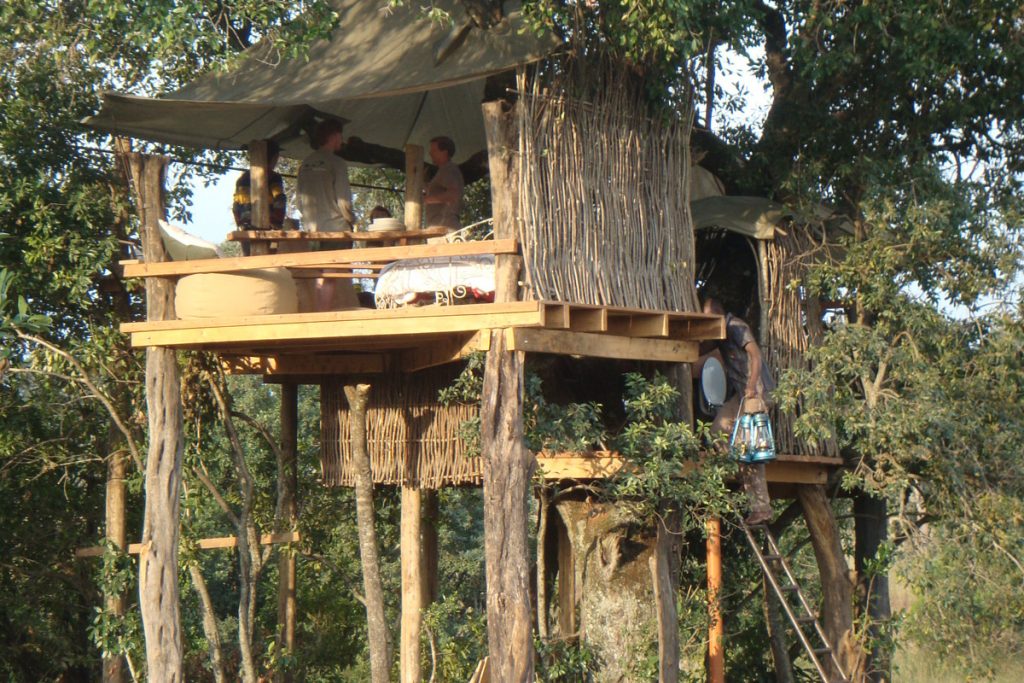
The sleepout at Serian
Kicheche operate a terrific overnight walking safari between Kicheche Valley Camp and Kicheche Bush Camp. Guests spend a night out in the bush, sleeping in dome tents which are largely mosquito netting, watching the chef prepare dinner over a camp fire, and enjoying the sounds of the night and the flicker of oil lanterns.
Naboisho Camp offers a lovely walking and fly-camping option on the Naboisho conservancy, combining the excellence of the walking experience with the chance to enjoy the wildlife and wilderness of this rich habitat.
Masai community visits and homestays
One of the lovely aspects of staying in a Masai owned camp or on private conservancy in the Masai Mara is that you’re directly helping the local Masai people who own the land. Part of the price paid to stay there goes direct to the local people, allowing them to invest in educating their children, providing healthcare, and offering a more secure income than raising cattle and goats.
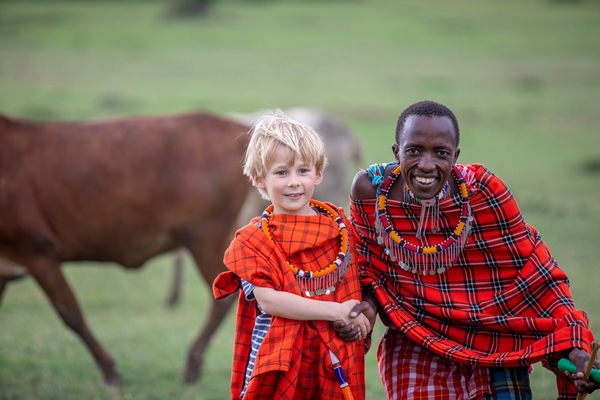
Learning about Masai customs at House in the Wild
Thanks to this relationship, visitors are always welcomed to the communities on whose land they are staying. It’s a properly authentic visit to people who really appreciate the help you are giving them and their families. Learn about the challenges of grazing domestic livestock in an environment that’s rife with predators, and the fascinating traditions of the Masai people and their daily lives. Visit schools and meet people who grow produce to supply the safari camps. It’s a wonderful opportunity to broaden your own horizons, and also to better understand the subtle relationship between the Masai and the wildlife; it’s no accident that many of the best wildlife habitats in East Africa are also those which the Masai favoured for their herds.
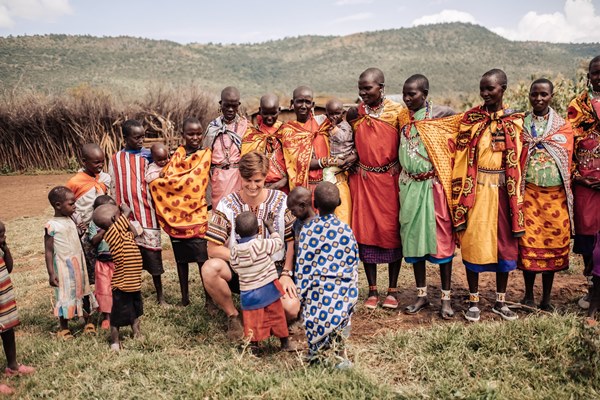
Visiting a Masai village close to Cottar’s 1920s Safari Camp
Offbeat Mara, Tangulia Mara, Serian, Acacia House, Naboisho and Cottar’s 1920s Safari Camp are among the properties that have excellent links with the local people, and can arrange a sensitive and authentic visit for their guests.
House in the Wild can also arrange an overnight stay in a Masai community for any wanting to learn even more. Help getting the livestock safely corralled for the night, sit round the fire sharing stories of your respective lives, eat a traditional meal, and sleep in a Masai hut.
Horse riding
Surely the most thrilling and enjoyable way to see wildlife if not in a vehicle, the horse riding in the Masai Mara is among the best in Africa. With terrain that is ideally suited to fleet-footed creatures, vast expanses of open grassland to canter across, numerous fallen trees to jump, it’s a veritable playground for keen and experienced riders.
Offbeat Riding Safaris arrange seven night rides, which travel across the full width of the Mara, taking in the escarpment as well as the conservancies. The lightweight but comfortable camp moves three times during the week, and each time it has a beautiful and secluded setting.
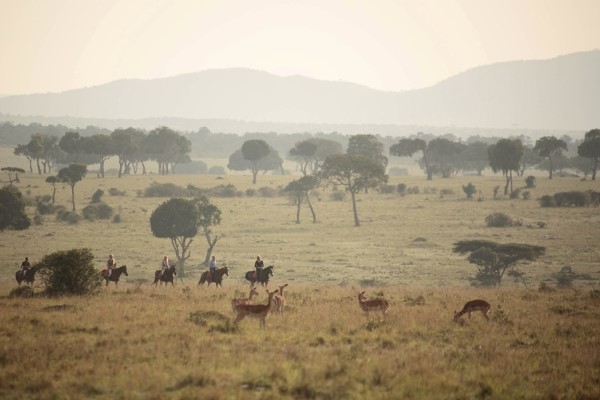
Riding across the Masai Mara with Safaris Unlimited
Safaris Unlimited rides are always guided by Gordie Church, one the finest guides in Kenya. Started by his father Tony in 1972, Gordie’s safaris build on a legacy of excellence, with fabulous food and service, beautifully schooled horses, and the finest tack and equipment.
Balloon flights
They are a ‘bucket-list’ experience for many people, and I have to admit that the view from 1,000 feet up can be utterly sensational. There are numerous companies offering shared commercial flights nowadays, and some mornings it looks like the Bristol Balloon Festival is taking place in the Mara instead. The other downside is the size of the balloons, and if sharing a balloon basket with up to 16 others does not appeal, we strongly recommend a private flight, which would elevate flying over the Masai Mara to a spectacular, world-class experience that’s actually worthy of the destination.
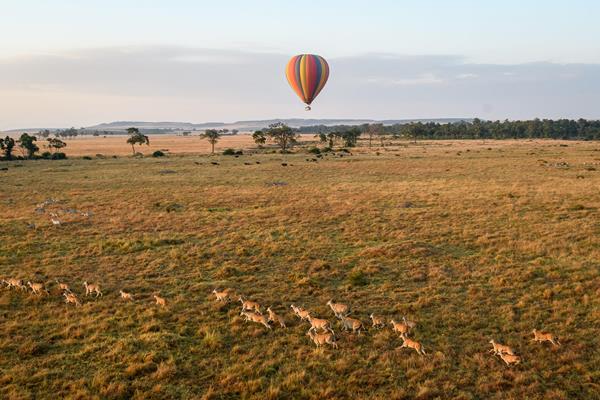
Drifting across the Masai Mara in a hot air balloon. c. Little Governors Camp
Electric bikes
The fabulous Cottar’s 1920s Safari Camp and Bush Villa have electric bikes which guests can use to get some exercise and have some fun. Bike rides are limited to a handful of guests at a time to ensure safety, and can last for several hours depending on guests’ wishes.
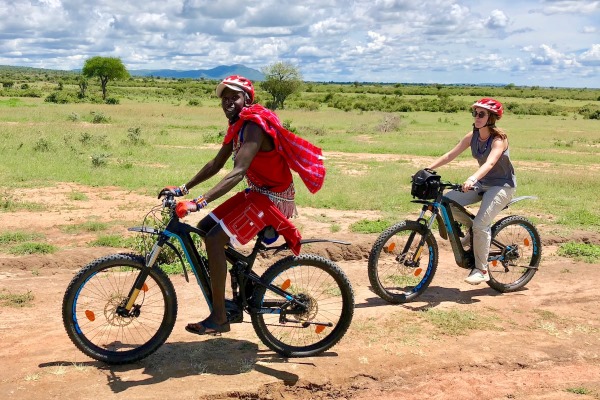
Exploring the Masai Mara on an e-bike at Cottar’s 1920s Safari Camp
Boda-boda rides
The Swahili name for a small motorbike, boda-boda sounds like the machine it names. Offering ideal, versatile low cost powered transport, they are ubiquitous in rural Africa these days, as well as in cities and towns. House in the Wild can arrange a morning on a ‘Chinese Impala’ going off-road across the Enonkishu conservancy. It will be a lot of fun, and ends with a bush breakfast overlooking a lake on the conservancy.
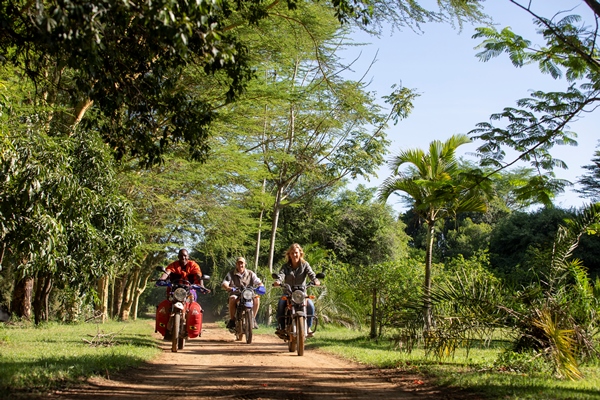
Exploring by motor bike at House in the Wild
Fishing
House in the Wild, Serian and Cottar’s also offer some opportunities to go fishing; this is very much seasonal and dependent on water levels, but for something different it is a fun way to spend an hour or two.
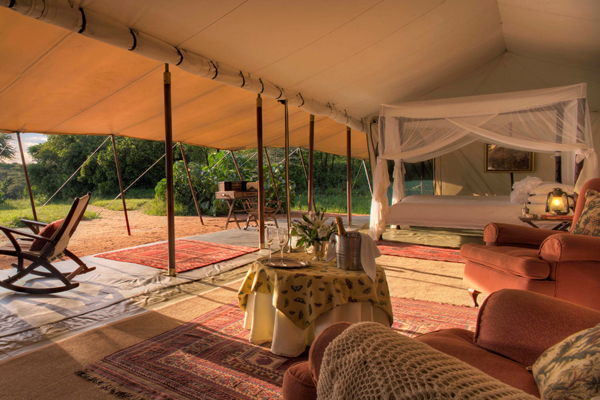
Luxury tented accommodationa at Cottar’s 1920s Safari Camp, where among the many activities on offer are fishing expeditions
What Next?
Let us know if you would like itinerary ideas to include a Masai Mara safari without a vehicle we would be delighted to put something together for you. Give us a call, or drop us an email and we’ll respond as quickly as we can – usually on the same day. We very much look forward to talking to you.
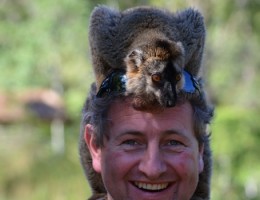
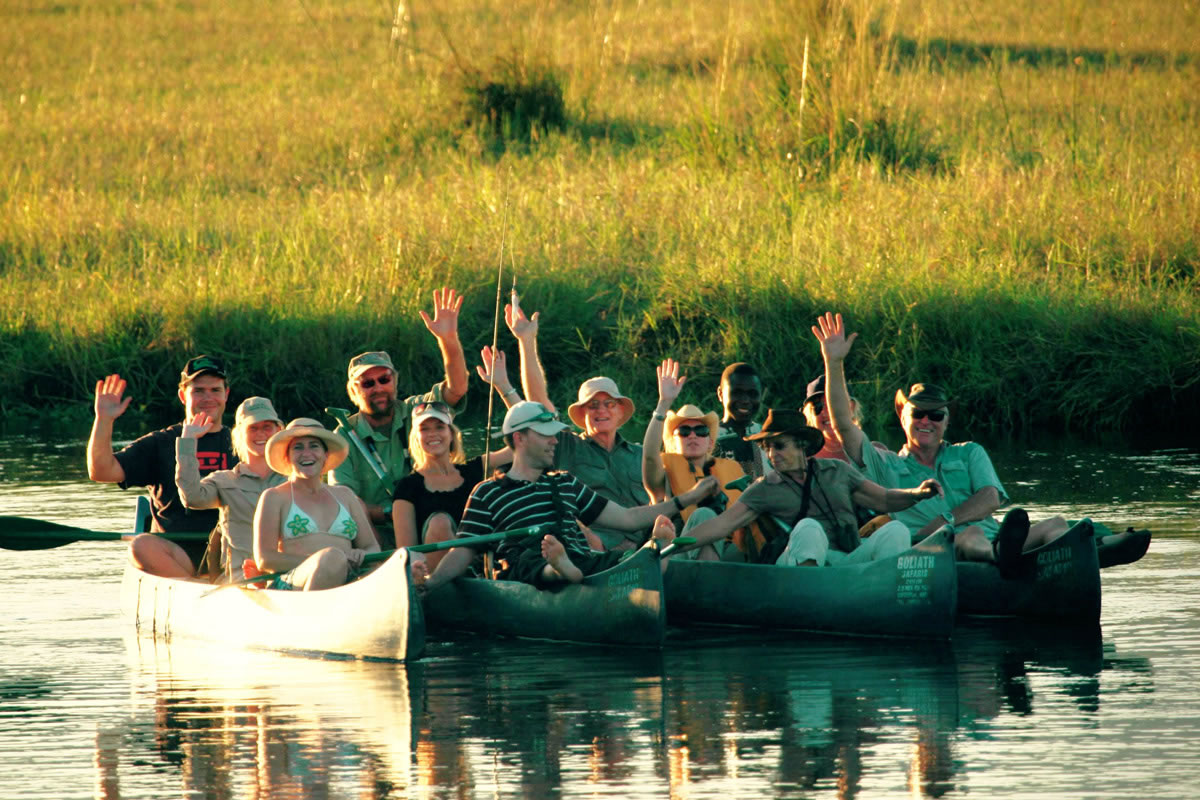
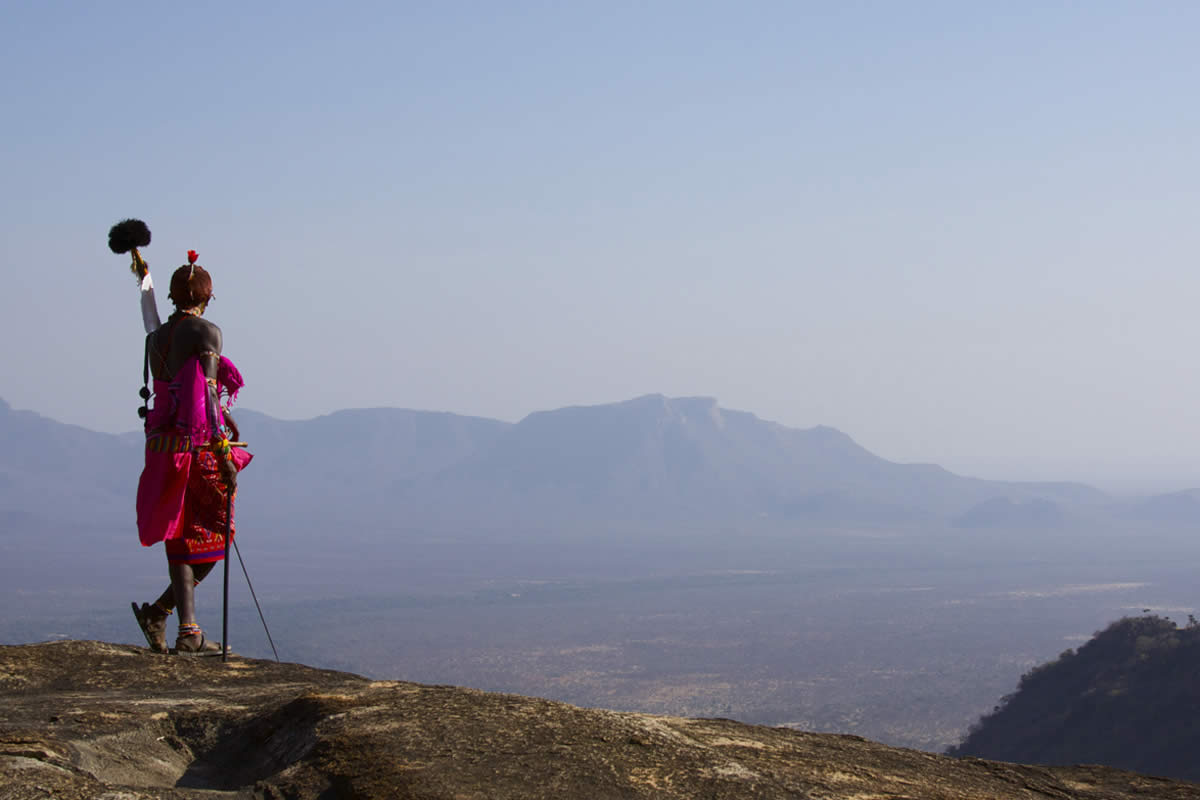
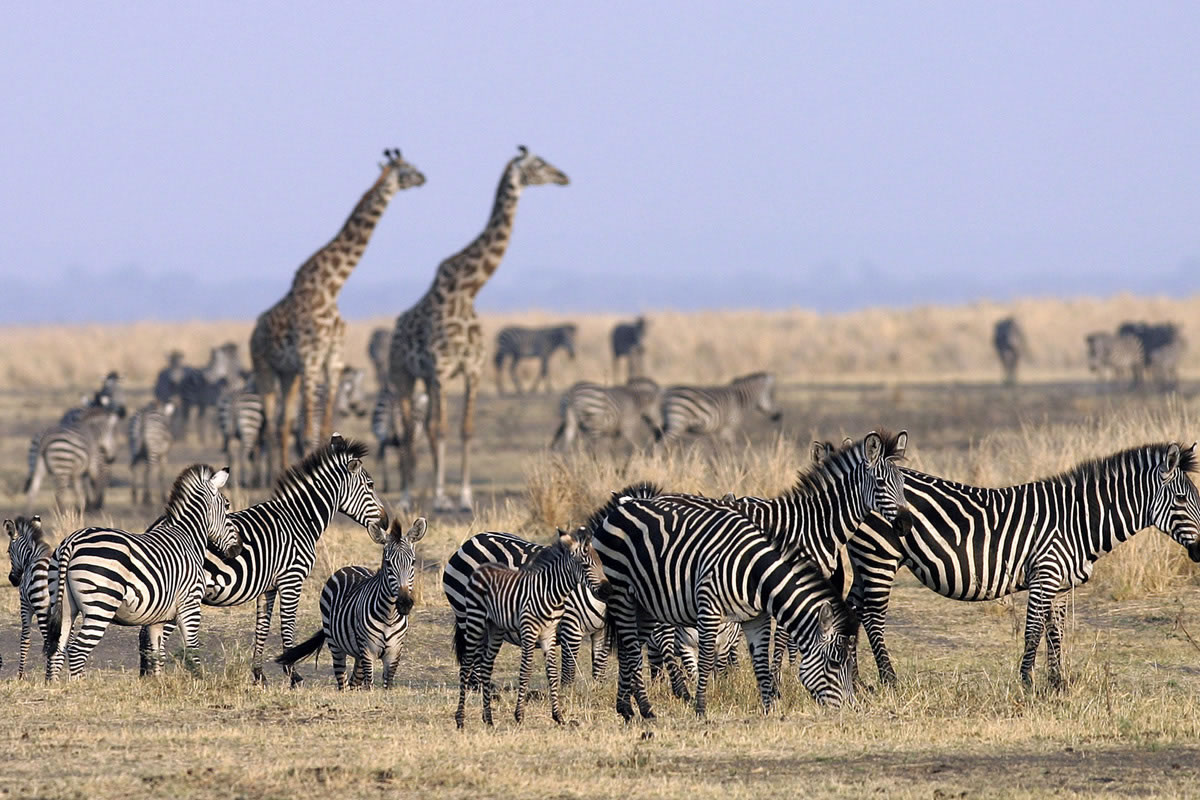

Hi. I’m planning to visit maisa Kenya next year. I would.like to find out about maisa mara safari walks and game drive so I can plan in advance.
We can certainly help. I will ask one of our experts to be in touch by email